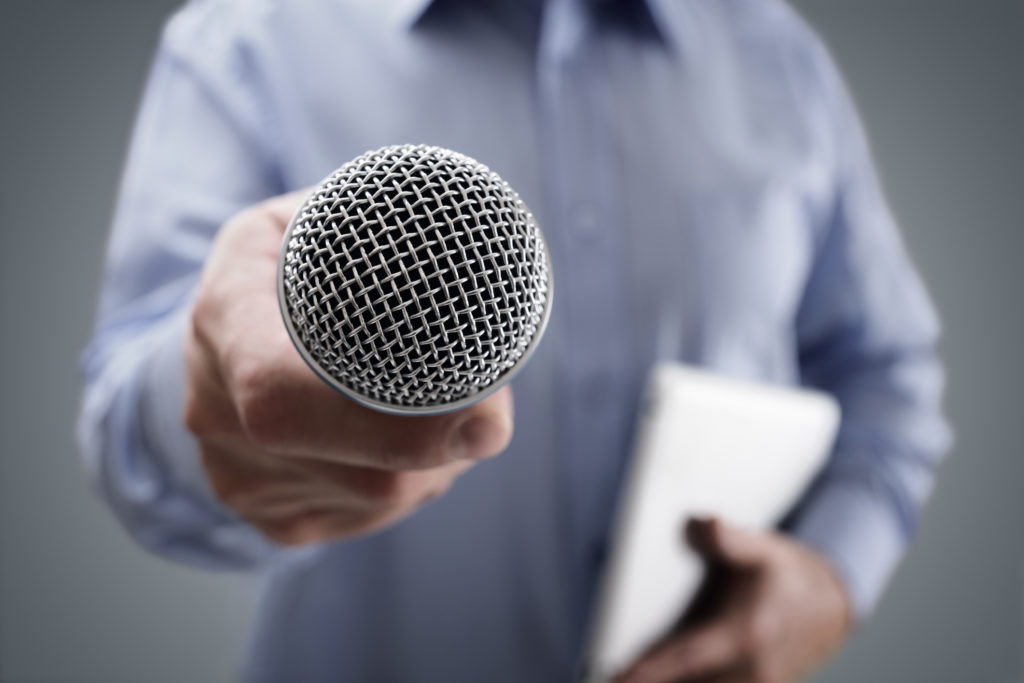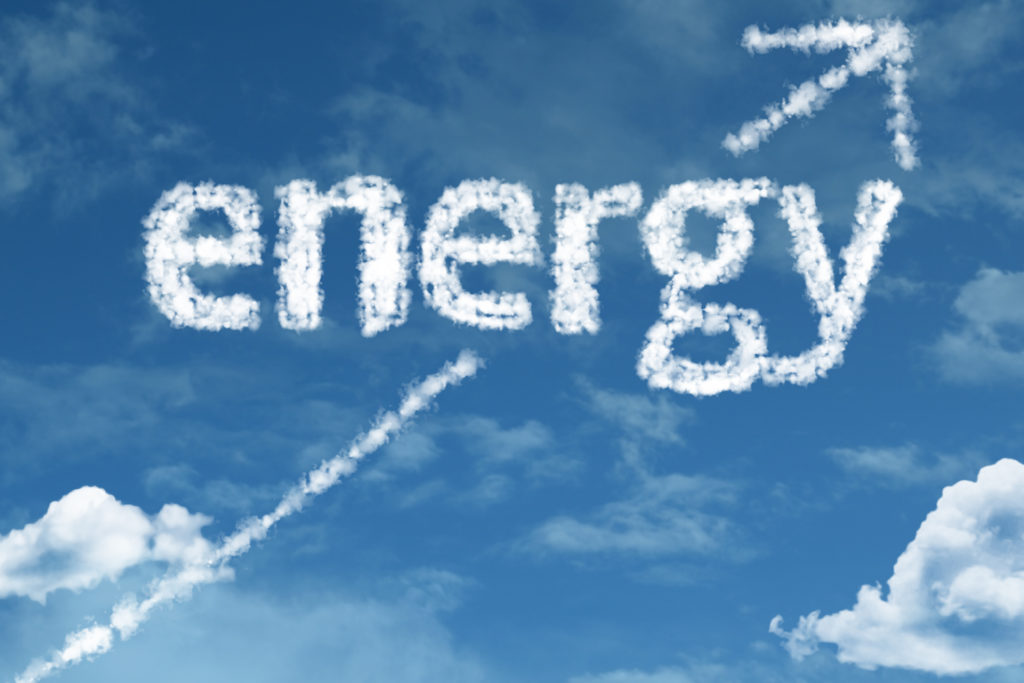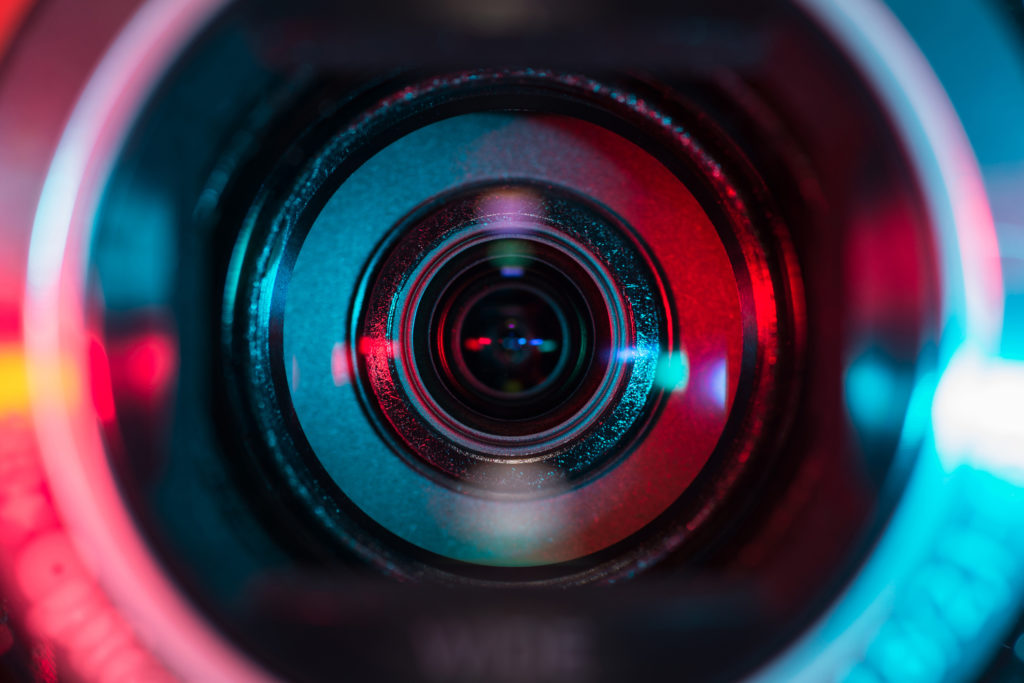Body Language: Tips for Your TV Interview
How much time do you have to make a first impression? A minute? Several seconds? How about a millisecond (which is less than a blink of an eye)?
Studies vary on the number, but research suggests people make an impression of you in mere moments. Once formed, it’s hard for them to change it. This reality is particularly challenging when it comes to a televised media interview. Segments rarely last more than a few minutes. In these instances, employing effective body language is as imperative as utilizing the proper words.

While what we say impacts the way we come across to another, what we are doing while we say it may, in some circumstances, have even more of an impact.
Body language is a powerful conveyer of our emotional state. It becomes particularly intriguing to others when what we are saying appears contrary to the expressions and gestures we are simultaneously exhibiting. Any incongruity usually leads observers to disregard your words in favor of your actions. When it comes to media training, that discordance is known as “message disconnect.”
During our media training sessions, we work with clients on the best practices for nonverbal and vocal communication. Below, the five fundamentals we share with you are energy, eye contact, gestures, posture, and voice, and we throw one more tip in for good measure. When utilized effectively, they become a powerful channel through which to reinforce and emphasize your key points during your next media interview.
Body Language Basics
Overall, you want to convey physical movements and a vocal tone that enhance the effectiveness of your words. This will make you appear more credible, and help the audience to forge a personal connection with you. If an audience likes you and relates to you, they will be more receptive to your message. If you are doing something that distracts from that, such as failing to maintain eye contact or fidgeting in your seat, they may not hear your words.
We begin:
1. Energy
Your words can’t do it all on their own – it would be like playing the piano with one hand. Two hands create a far richer sound. When you team the right energy with the right words, your message becomes more resonant.
Merriam-Webster defines energy simply as “dynamic quality.” In real life, that plays out like this: Energetic people are hard to miss. They attract attention, are captivating and lively, and are often on the move. They can inspire others to follow whatever cause or message they are conveying. The most gifted spokespersons utilize this dynamic quality to bring verve and energy to their interviews. They are compelling and engaging. Some of them may be naturally gifted, but more than likely they worked to bring more energy to their delivery.

When we work with our clients, we encourage them to be engaging and warm, and to share their passions and beliefs. However, most people underestimate just how energetic they appear. What feels right to clients in the training room often looks flat on television.
Here are a couple of ways you can pump up that energy:
- The next time you’re out to dinner with friends, pay attention to your energy as you’re sharing an interesting, surprising, or outrageous story. Odds are you’re speaking a bit louder than usual, using more gestures, and employing a broader vocal range. Pay attention to that energy. It’s natural to you, so it will look natural on camera. And it’s almost always better than the more conservative “professional” (and sleepy!) tone too many spokespersons think they need to use.
- To test your range, take a few videos while you are speaking. Aim for three different deliveries – one normal, one a bit livelier, and another over-the-top. You may be surprised which one plays best to the camera.
2. Eye Contact
There’s little question about the value we put on eye contact. The eyes not only regulate conversation, but they influence many phrases – “eye-to-eye,” “withering glance,” “deadened stare,” “playful wink,” “a beady-eyed look.” As Allan and Barbara Pease point out in their Definitive Book of Body Language:
“The eyes can be the most revealing and accurate of all human communication signals …”
In general, during a television interview, guests look one of two places – either at the interviewer or the camera. While it may feel unnatural at first, it’s best to aim for 100 percent eye contact. It’s unnatural for a couple of reasons – mostly because in normal conversation such deep gazing would inevitably come across as creepy or too intimate. However, since the norms of normal conversation do not always translate into live media interviews, eye contact must be adjusted, as well.
In everyday conversation, our eyes wander as we work to retrieve information, which is all perfectly normal. On television, however, that could come across as distress or nervousness. If the interview is a challenging one, the audience might think you are being evasive or defensive – neither of which will help to form a positive impression.
 What follows are some body language techniques to employ for the three formats that are generally followed for television interviews. Before we move on, we offer one quick tip. Spokespersons can help their cause by doing most of their thinking before the interview begins. Go over your main points until you have internalized them. If you do that, you should have no problem looking anywhere but your target.
What follows are some body language techniques to employ for the three formats that are generally followed for television interviews. Before we move on, we offer one quick tip. Spokespersons can help their cause by doing most of their thinking before the interview begins. Go over your main points until you have internalized them. If you do that, you should have no problem looking anywhere but your target.
So, keep your eye on the prize. Here you go:
“Bites” Interviews: This is the most common format, typically used by producers who intend to use only a few quotes from your interview. You will look slightly off camera, lock eyes with the interviewer, and ignore the camera.
On-Set Interviews: This format, which is often seen on morning “chat” shows, most closely resembles everyday conversations. Lock eyes with the interviewer or whichever guest is speaking.
Remote Interviews: This is the most difficult format, since you stare directly into a camera. Before the interview begins, visualize your “target person.” Act as if the camera is that person. Stare into the lens during your entire interview, even when you’re not speaking — as you might still appear on screen. You can practice by delivering your answers to a specific spot on your office wall.
3. Gestures
Many times, our clients tell us that they were taught not to gesture when they speak during a media interview. That’s bad advice. Think of gestures as the interjections of body language. As with their verbal counterparts, gestures show emotion and feeling.
As Allan and Barbara Pease note:
“Using hand gestures grabs attention, increases the impact of communication, and helps individuals retain more of the information they are hearing.”
In other words, gesturing not only helps you look more natural but also enhances the impact of your words.
Gestures also help improve the words spokespersons use. We typically find that people who gesture form clearer thoughts, speak more concisely, and appear more natural on camera. If you are too stiff, you potentially come off looking inauthentic, uncomfortable, and unnatural. Viewers may deduce that you are not all that interesting and tune out for much of what you have to say.
Here are some things to remember for your next media interview:
- Certain gestures may not be as effective as others, such as jabbing one’s finger or clenching one’s fist. Be authentic, yes, just be sure to know what you are interjecting through your body language. (Allan Pease offers some additional tips here.)
- Although fast, undisciplined gestures can be distracting, don’t be afraid to employ gestures that come naturally – even if the camera is only trained on your face, neck, and shoulders. Even if viewers can’t see the movements, they can see the expression on the spokesperson’s face, which tends to become more animated when gesturing.
- What should you do with your hands? The key is never to “lock” or “hide” your hands. You can rest them at your side. It will feel odd but look normal. Or, our preference is to nest one hand within the other, keeping both at navel level (when standing) or on your lap (when seated) when not gesturing. This allows you to gesture freely when making an important point.
4. Posture
Slouch. The word itself sounds like what it describes. As a noun, it’s used to describe a lazy or incompetent person. It’s OK to get comfortable while sitting on your living room couch, but no one wants to be a slouch on TV. That’s where posture comes in.
One of the remarkable things about media training is watching the tremendous impact that “small” adjustments can make, and proper posture is chief among them. Here are several ways to improve body language through your posture, whether you are sitting or standing:
- If you are in a chair, lean forward slightly and firmly plant your feet on the floor (avoid crossing your legs). It is from this angle that it is much easier to project energy and gesture naturally. When you slump, you are in a passive position. Researchers have found that our actions can change the way we think and feel about ourselves.
- Another “small” adjustment can help if you are being interviewed while standing. Place one foot just a few inches in front of the other. You will prevent the dreaded side-to-side sway and will keep your energy aimed forward, toward the lens – and the audience.
 5. Voice
5. Voice
Your voice is an important instrument in conveying your messages. Remember that one-handed piano player? Just as it took the other hand to create a deeper sound, your voice benefits when you utilize all the tools that can make it a more versatile instrument. Simply by altering your volume, pitch, pace, and tone – how soft, loud, fast, slow, high, or low you go – you can change the meaning of your words and add greater context to your message. In a media interview, it draws the audience’s attention and makes for a far more dynamic appearance. A louder voice, for instance, signals energy and excitement, while a softer voice increases intimacy and drama.
There are a few other ways you can improve your vocal delivery while on television. Here are a few:
Pace: Most people speak between 150 and 160 words per minute, but quicken their pace when they get nervous. Speaking quickly can be useful if you want to add excitement to a specific point, but be careful not to rush through your entire interview. Reduce your speed when discussing more complicated information, emphasizing a key point, or building drama.
Pitch: When you ask a question, your pitch usually goes up at the end of the sentence; when you give a command, your pitch goes down. People tend to speak with a higher pitch when they’re nervous or excited and with a lower pitch when they feel more relaxed and controlled. Both can be effective, but be careful to avoid vocal “upticks,” which occur when your pitch gets higher at the end of every sentence. An uptick makes you sound as if you’re seeking permission rather than making a statement. Too many of them will diminish your credibility.
Pause: Practice “diaphragmatic breathing,” which can make your voice fuller, more resonant, and less nasal. It also gives you better breath control, meaning you won’t have to breathe as often. So how do you to this? First, take a deep breath. If your chest expands, try again. You are trying to keep your chest still as you breathe in and push your stomach out. Now begin talking and expending that air you’ve taken in. Your stomach should be moving in. You could practice by lying down and then work to a seated position, so that you are ready to employ the technique during a television interview.
6. Less fear
This section is your extra tip. It’s not so much about a particular physical movement or vocal cue, as it is about what causes you to act and speak in certain ways. We are talking about your thoughts and feelings. It’s important to get a check on your mental state before you head to your media interview. If you are anxious, you may fear you are not coming off as natural and authentic as you hope to be, and your body language may reflect that. It’s natural to be nervous, but there are ways to manage that anxiety. Here are a few:
Practice Makes Perfect: Most clients tell us that the single best way to reduce their fear is by getting familiar with their material and conducting several practice sessions prior to the interview.
You Don’t Have To Be Perfect: No one is judging you on a scale of perfection. You’re allowed to stumble over a phrase, say an occasional “ummm,” or forget a word here and there. If you focus on doing the big things well – delivering quality content with passion – the audience is likely to form a positive impression of you.
Give Yourself a Break: You’re a bad judge of your own nervousness. Don’t assume the audience can sense your pounding heart or sweaty palms – just because you feel your body language is conveying anxiety, it doesn’t mean they see it (and they usually don’t).
All this for several seconds, you say? Yes, all this. When you are strong and confident in your appearance and delivery, you are putting your most effective self forward. And that is a great first impression.
 5. Voice
5. Voice

